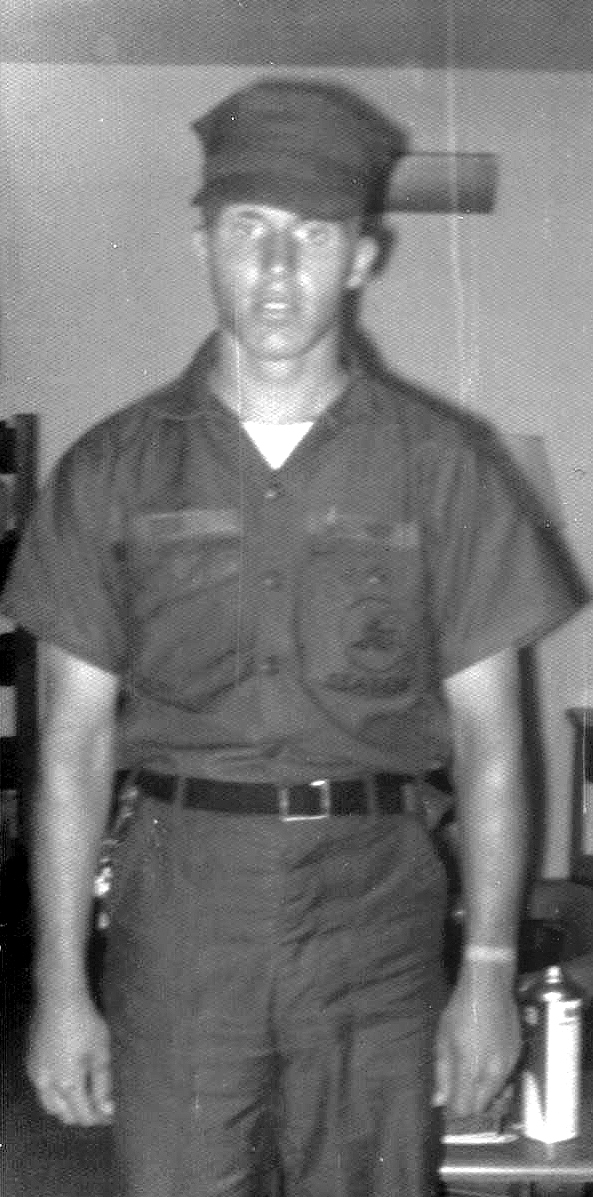Shipyard rigger shares Seabee memories
By Michele Fletcher, PSNS & IMF Public Affairs
BREMERTON, Washington -- Ed Stein opened his backpack and pulled out a couple of yearbooks and some faded photos—images of a young Seabee, boots and hardhat donned, ready to build.
|

|
|
Ed Stein, rigger in Puget Sound Naval Shipyard & Intermediate Maintenance Facility's Lifting and Handling Department, poses for a photo in 1973, while assigned to A Company, U.S. Naval Mobile Construction Battalion, 62.(Courtesy photo)
|
Stein, a rigger in the Puget Sound Naval Shipyard and Intermediate Maintenance Facility Lifting and Handling Department, began working at the Shipyard in 1989 as an apprentice for what was then known as “Shop 72,” the rigger’s and laborers shop. He never left the trade.
“I’ve worked all over the Command, on many ships and submarines,” said Stein. “USS Nimitz (CVN 68) was my first, and I feel a connection with that ship.”
Before working at the Shipyard, Stein spent two years, from 1973 to 1975, enlisted in the Seabees as part of the United States Naval Mobile Construction Battalion 62, Alpha Company. Much of that time was spent in Guam and Rota, Spain.
As the Seabees celebrate their 75th anniversary this year, Stein shared a few memories from his time in uniform. He said a particularly memorable project was building a swimming pool at the naval hospital in Guam. The pool was made of concrete, and it was one of the first jobs completed at the time using gunite.Gunite is a mixture of cement, sand and water applied through a pressure hose, producing a dense hard layer of concrete.
Stein was transferred before the project was completed, but it was such a ground-breaking, memorable job that more than 20 years later, during a work trip to Guam, he sought out that pool and saw that it had served the community well.
Upon entering the Shipyard and its apprenticeship program, Stein said that working with the riggers was a given. When he interviewed for a job at the Shipyard, Stein explained what he did as a Seabee and what he loved about that type of work. The riggers he spoke to said that joining their team would probably be a good fit for him, so he chose their shop and has been there ever since.
“Ten people can do a rigging job 10 different ways,” said Stein, stating that it is important that the job gets done and gets done safely, and that the workers can adapt to changes when needed.
Working at the Shipyard as a rigger was an opportunity to once again do what he loved—work with his hands. He said that the most rewarding thing about working with his team is the feeling of accomplishment at the end of a project.
“Some jobs you are working on a particular component, and that’s what you do all the time,” he said. “That’s a valuable part of a job and critical to our success. However, working as a rigger can encompass so many different aspects and jobs. When a project is finished, you’ve likely assisted in every part of the ship. You get to see it all.”
That type of work makes him happy, which is very important to him.
“Well, it’s one of our inalienable rights—life, liberty and the pursuit of happiness—that’s in the Declaration of Independence,” he said.
Being a rigger isn’t Stein’s only connection s to the Shipyard. His daughter, Shylo Shorthouse, a naval architect with the Structural Engineering and Planning Department, also works here.
Shorthouse credits her dad’s service in the Seabees and at the Shipyard with influencing her future and her career choice.
“My dad became a Seabee for the Navy when he was 17,” she said. “Most other kids at that age were in high school. He’s told me he grew up a lot and learned to be responsible while he was in the Seabees. While he was in the apprenticeship [at the Shipyard], I remember him doing homework at night. Seeing him do the work and then enjoy the results of his work really sealed the deal for me to become an engineer. I find my career here at PSNS & IMF really satisfying.”
Stein, too, is satisfied with his work at the Shipyard, noting that if people are willing to learn, stay active and seek out new things, the Shipyard environment is a great place for them.
“If you’re looking for a challenge, they have it,” he said. “If you’re curious, they’ll teach you. If you want a new opportunity, they’ll give you the tools and training to achieve your goals.”
|

Ed Stein, a rigger in Puget Sound Naval Shipyard and Intermediate Maintenance Facility's Lifting and Handling Department, and his daughter, Shylo Shorthouse, a structural engineer at the Shipyard. (Photo by Zack Frank, PSNS & IMF photographer)
|
|